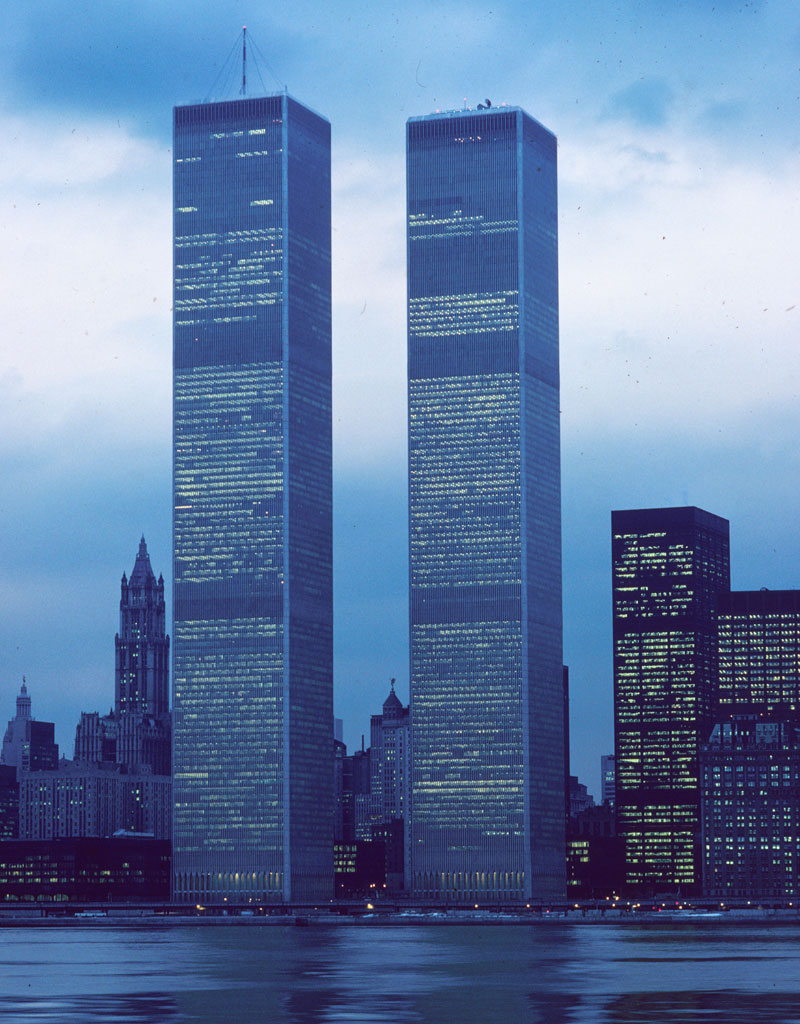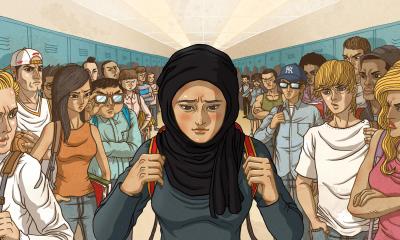Introduction/Overview:
 One of the worst tragedies in the 21st century was a terrorist attack by
One of the worst tragedies in the 21st century was a terrorist attack by the Islamic group Al-Qaeda on the World Trade Center. It can be recalled as 9/11. This led to major political, social and cultural impact; one being Islamophobia. The attack enhanced existing biases and misconceptions about Islam and Muslims, which led to a rise of anti-Muslims sentiment around the country. This behavior goes against society’s values of diversity, inclusivity and equal opportunity. Islamophobia in higher education is not limited to individual acts of discrimination, but it is embedded in policies, practices and institutional cultures. This can lead to bias during admissions, hostile campus climates which can have negative effects on Muslims, including marginalization, exclusion, and lack of opportunities. It is crucial to address Islamophobia because institutions need to foster an inclusive and diverse environment to promote social justice and provide equal opportunities to every student, regardless of their religious practices.
the Islamic group Al-Qaeda on the World Trade Center. It can be recalled as 9/11. This led to major political, social and cultural impact; one being Islamophobia. The attack enhanced existing biases and misconceptions about Islam and Muslims, which led to a rise of anti-Muslims sentiment around the country. This behavior goes against society’s values of diversity, inclusivity and equal opportunity. Islamophobia in higher education is not limited to individual acts of discrimination, but it is embedded in policies, practices and institutional cultures. This can lead to bias during admissions, hostile campus climates which can have negative effects on Muslims, including marginalization, exclusion, and lack of opportunities. It is crucial to address Islamophobia because institutions need to foster an inclusive and diverse environment to promote social justice and provide equal opportunities to every student, regardless of their religious practices.
Discussion:
 Islamophobia, the fear, hatred and discrimination against Islam and Muslims in higher education is an issue that impacts many parts of academic life. This includes admissions, campus climate, and classroom experience for Muslim students and faculty. Ahmadi Shafiqa and Darnell Cole in their book, “Islamophobia in Higher Education: Combating Discrimination and Creating Understanding,” argue that Islamophobia in higher education is not just a matter of individual acts of discrimination, but it’s an issue embedded in policies, practices, and institutional cultures. They highlight how some institutions consider Muslim individuals and their religious identity as a potential threat, leading to biased admissions. Students who get admitted are sometimes faced with hostile campus climate, harassment, and exclusion (Shafiqa and Cole 126).
Islamophobia, the fear, hatred and discrimination against Islam and Muslims in higher education is an issue that impacts many parts of academic life. This includes admissions, campus climate, and classroom experience for Muslim students and faculty. Ahmadi Shafiqa and Darnell Cole in their book, “Islamophobia in Higher Education: Combating Discrimination and Creating Understanding,” argue that Islamophobia in higher education is not just a matter of individual acts of discrimination, but it’s an issue embedded in policies, practices, and institutional cultures. They highlight how some institutions consider Muslim individuals and their religious identity as a potential threat, leading to biased admissions. Students who get admitted are sometimes faced with hostile campus climate, harassment, and exclusion (Shafiqa and Cole 126).

The discrimination within higher education goes further to other aspects that have a significant impact on Muslim students. A report done by the Council on American-Islamic Relations (CAIR) named, “Islamophobia on College Campuses and Its Impact on Muslim Students” states that 73.71% of the students surveyed had experienced a form of harassment or discrimination through various types of comments, texts, emails, social media posts, threats, etc. One student states that “I am a student in the Disabled Students’ Program; it was difficult for me to access [the program]. I was told that ‘it was not wise to make me mad because I might bomb (that person’s) house’” (Islamophobia on College Campuses 27). Muslim students continue to experience this type of behavior on campus just because of their religious practices, this students experience illustrates the reality of Islamophobia in higher education. It shows how Muslims face discrimination and harassment even when trying to access services. The comment made to the student relates a harmful stereotype against Muslims that portrays them as violent terrorists.
 Another experience was faced by a Muslim trying to practice their religion within their campus. Their experience was portrayed in a study on Islamophobia in education by Kistoro et al., who discusses the impact of Islamophobia on Muslim students who wear the niqab in higher education. The participant in their study expressed, “I have experienced discrimination and harassment on campus because of my choice to wear the veil. People stare at me, make derogatory comments, and treat me differently” (Kistoro et al. 240). Another participant shared, “Professors have made biased comments about my veil, questioning my ability to fully participate in classroom discussions” (Kistoro et al. 240). These quotes highlight the experiences of Muslim students who wear religious attire in higher education who have experienced poor reactions from their classmates and professors. This indicates that Islamophobia is not only directed towards Muslim individuals but also extends to their cultural and religious practices.
Another experience was faced by a Muslim trying to practice their religion within their campus. Their experience was portrayed in a study on Islamophobia in education by Kistoro et al., who discusses the impact of Islamophobia on Muslim students who wear the niqab in higher education. The participant in their study expressed, “I have experienced discrimination and harassment on campus because of my choice to wear the veil. People stare at me, make derogatory comments, and treat me differently” (Kistoro et al. 240). Another participant shared, “Professors have made biased comments about my veil, questioning my ability to fully participate in classroom discussions” (Kistoro et al. 240). These quotes highlight the experiences of Muslim students who wear religious attire in higher education who have experienced poor reactions from their classmates and professors. This indicates that Islamophobia is not only directed towards Muslim individuals but also extends to their cultural and religious practices.
 The hostile campus environment and continuous backlash against Muslim students can negatively impact their well-being and academic performance. The report by CAIR further emphasizes that Islamophobia contributes to a climate of fear and alienation for Muslim students, hindering their sense of belonging and inclusion on campus (Islamophobia on College Campuses 31). This indicates that Islamophobia in higher education not only harms Muslim students physically but psychologically as well.
The hostile campus environment and continuous backlash against Muslim students can negatively impact their well-being and academic performance. The report by CAIR further emphasizes that Islamophobia contributes to a climate of fear and alienation for Muslim students, hindering their sense of belonging and inclusion on campus (Islamophobia on College Campuses 31). This indicates that Islamophobia in higher education not only harms Muslim students physically but psychologically as well.
The impact of Islamophobia enhanced after the tragedy of 9/11, where anti-Muslim assaults were at their peak during the year of 2001 and the years that followed (Pew Research Center). The time passed, however, the effects continued after and have left great damage to Muslim students. Jennie Lebowitz in the article “Muslim American Youth in the Post 9/11 Public Education System” discusses how Muslim American youth faced an increase in discrimination and bias from their peers and teachers after 9/11. She talks about how students face multiple forms of Islamophobia, including bullying, discriminatory policies and biased attitudes from peers, teachers and administrators. The author discusses how this can lead to negative psychological, emotional and academic consequences, including lower self-esteem, decreased motivation, and limited opportunities for learning and participation in the classroom. Moreover, Islamophobic bias among faculty and staff can also affect the curriculum, which can lead to misrepresentation, stereotyping, or exclusion of Muslim perspectives and contributions in the academic content. (8)
In conclusion, Islamophobia in higher education is an issue that isn’t only an individual act of discrimination, however, it is embedded in policies, practices, and institutional cultures. Muslims continuously face different forms of challenges within their academic life, whether it’s their admissions or their experiences after being admitted to a college. The different forms of Islamophobia can be based on anything from religious identity, attire and cultural practices, all which have a negative reaction from students and faculty. The aftermath of 9/11 has further intensified the issue, leading to increased bias and discrimination against Muslim American youth in the education system. It is crucial to address this issue because without attention to the on-going discrimination and harassment, Muslims will continue to be misrepresented, stereotyped and excluded. Institutions need to promote inclusive and diverse academic environments that embrace religious identities, instead of claiming to value these aspects.
Work Cited
Ahmadi, Shafiqa, and Darnell Cole. Islamophobia in Higher Education: Combating Discrimination and Creating Understanding. Stylus Publishing, 2020.
“Islamophobia on College Campuses and Its Impact on Muslim Students.” CAMPUS ISLAMOPHOBIA – CAMPUS CLIMATE 2019 – 2020 REPORT
https://static.ca.cair.com/reports/downloads/CAIR-2019-2020-Campus-Climate-Report.pdf
Kistoro, Hanif Cahyo Adi, et al. “Islamophobia in Education: Perceptions on the Wear of Veil/ Niqab in …” Islamophobia in Education: Perceptions on the Wear of Veil/ Niqab in Higher Education
http://repo.uinsatu.ac.id/19963/1/Islamophobia.pdf
Lebowitz, Jennie, “Muslim American Youth in the Post 9/11 Public Education System” (2016). American Cultural Studies Capstone Research Papers. 6
https://cedar.wwu.edu/cgi/viewcontent.cgi?article=1005&context=fairhaven_acscapstone
“Anti-Muslim Assaults Reach 9/11-era Levels, FBI Data Show | Pew Research Center.” Pew Research Center, 30 May 2020.
www.pewresearch.org/short-reads/2016/11/21/anti-muslim-assaults-reach-911-era-levels-fbi-data-show.
